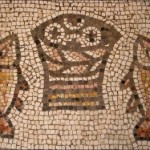September 11, 2014, at Flatirons Baptist Church in Boulder, Colorado.
Dr. James White: Dates, Doctrines and Dead People:
Lessons from the Early History of the Church. Session 1:
Session 2:
Session 3:
Session 4:

 Michael J. Kruger is professor of New Testament at Reformed Theological Seminary in Charlotte, 2012). He blogs regularly at Canon Fodder. In an article at The Gospel Coalition he writes:
Michael J. Kruger is professor of New Testament at Reformed Theological Seminary in Charlotte, 2012). He blogs regularly at Canon Fodder. In an article at The Gospel Coalition he writes:
Skeptics commonly criticize core Christian beliefs by claiming that they were not really held by the earliest Christians. Instead, we are told, these beliefs were invented post facto by the institutional church.
The classic example of such an argument has to do with the divinity of Jesus. The earliest followers of Jesus didn’t really believe that Jesus was divine, this argument goes; it was only the later institutional church, under political pressure from Emperor Constantine, that insisted Jesus must have divine status. Thus, some argue, the belief that Jesus is God is not really, well, Christian.
Substitutionary Atonement
This same sort of argument has also been applied to other doctrines, particularly the substitutionary nature of the atonement. Critical scholars, led by the classic work of Gustaf Aulén, have long argued that the earliest Christians did not believe that Christ died as a substitute for sinners. Instead, they say, these Christians believed what is known as the “Christus victor” view of the atonement—the idea that Jesus’s death on the cross (and resurrection) conquered the Devil and other forces that held people in bondage. On this view, Christ did not die in place of rebellious sinners but instead rescued victims from a fallen world.
If Aulén is correct, then when did the substitutionary view of the atonement arise? Peter Carnley embodies the typical critical approach when he says that the substitutionary view “was not known before Anselm’s time.” Thus, Carnley claims, it was not until the Middle Ages, when Anselm wrote Cur Deus Homo (Why the God-Man?), that Christians began to believe Christ died in place of sinners.
No doubt these sorts of scholarly arguments can explain why alternative theories of the atonement have gained popularity in recent years, while the substitutionary view continues to be vilified as un-Christian. Rob Bell does precisely this in his book Love Wins, where he roundly rejects the substitutionary view in favor of other options.
But is it really true that the substitutionary view of the atonement was not found before the Middle Ages? Not at all. Such a claim can be readily refuted merely by examining the writings of the New Testament itself—particularly the letters of Paul. However, it is also worth noting that key elements of the substitutionary view were held by some of the earliest Christian writers. One example is the author of the Epistle to Diognetus from the early second century. The Epistle to Diognetus was written by an unknown Greek author as an apology for Christianity. Below are some excerpts from the author that affirm key aspects of substitutionary atonement. Continue reading
A major resource:
and issues which have played significant roles in the history of the church. The courses are constructed around three major periods: (1) Pre-reformation, A.D. 33–1500; (2) The Reformation period, A.D.1500–1648; and (3) The Modern Age, A.D. 1648 to the present. Gnosticism, Arianism, Nestorianism, Church Councils, Anabaptism, Catholicism, the Reformation, the Puritans, and the Great Awakening, are examples of the subjects discussed. The last period is devoted to a survey of American Christianity.”
Historical Theology II: 27 Lectures